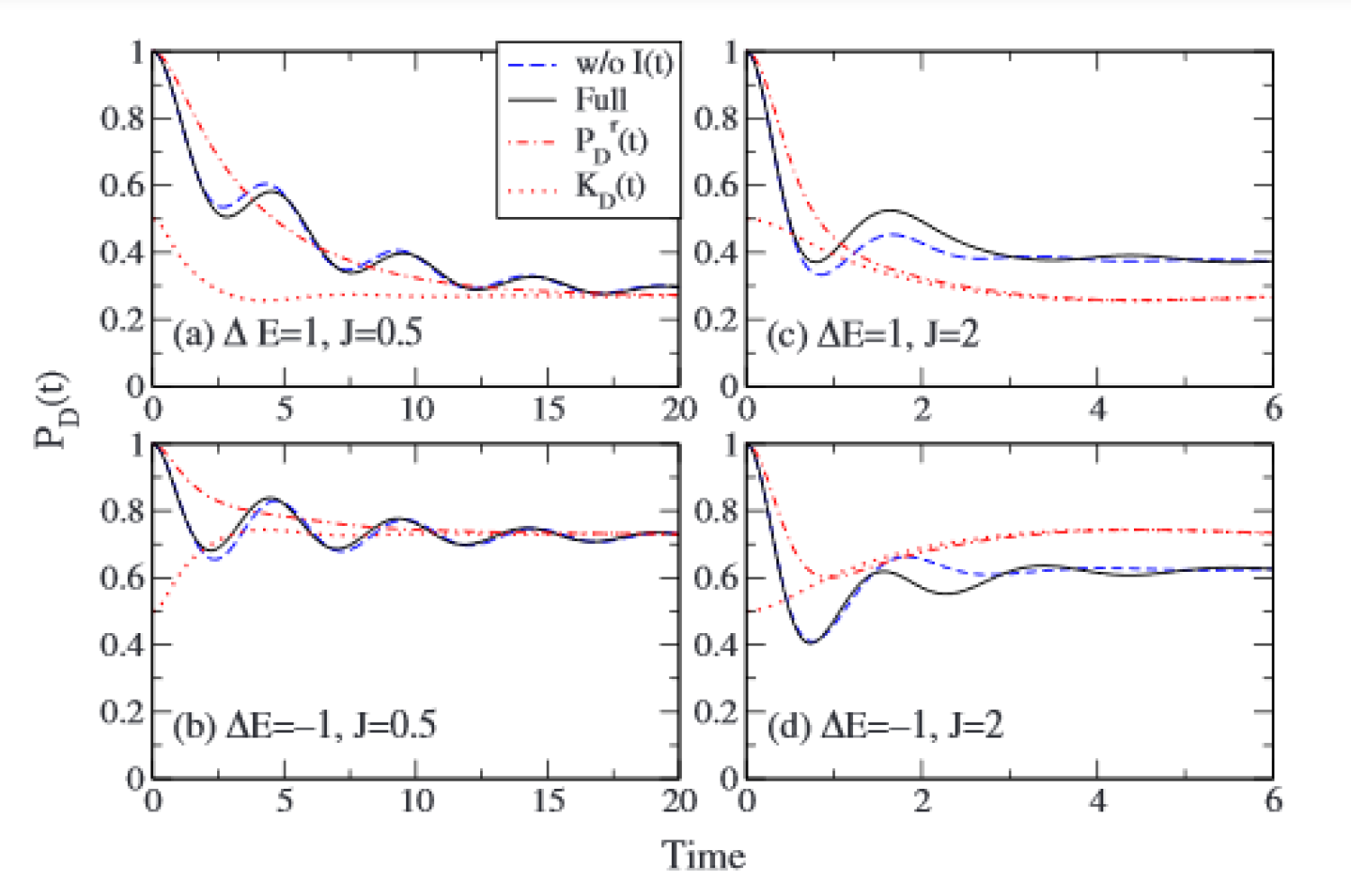Theory of coherent resonance energy transfer

A theory of coherent resonance energy transfer is developed combining the polaron transformation and a time-local quantum master equation formulation, which is valid for arbitrary spectral densities including common modes. The theory contains inhomogeneous terms accounting for nonequilibrium initial preparation effects and elucidates how quantum coherence and nonequilibrium effects manifest themselves in the coherent energy transfer dynamics beyond the weak resonance coupling limit of the Förster and Dexter (FD) theory. Numerical tests show that quantum coherence can cause significant changes in steady state donor/acceptor populations from those predicted by the FD theory and illustrate delicate cooperation of nonequilibrium and quantum coherence effects on the transient population dynamics.
Jang, S., Cheng, Y. C., Reichman, D. R. and Eaves, J. D. Theory of coherent resonance energy transferJ. Chem. Phys. 129, 101104 (2008)

